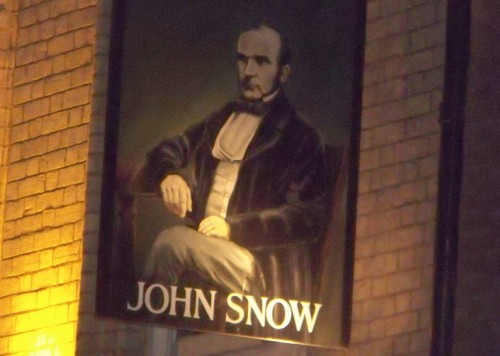The Value of Visualization
post by Chris Curran on April 24, 2012Recently I was discussing a history project with my son. He was writing a paper about the inconsistencies in access to clean water in all parts of the world and their causes. In researching the history of urban water access, he came across the story of the outbreak of cholera in the mid-1800’s in London and the impact it had on modern medicine. A young doctor, John Snow, proposed that cholera was carried in contaminated food or water, not through the air as most diseases were believed to be transmitted at the time. He plotted the reported cases on a map which also showed the location of the city water pumps. Through this visual plotting of data, he noticed that the cases in a particular area near Broad Street were clustered around one, but not all of the pumps. Further investigation showed that the water fed to the pump in question came from a location downstream from the city and likely contained sewage. As simple as this analysis seems, layering the data in context on a map, important and relevant questions jump out - something impossible with a list or table of data. Snow’s data analysis was also studied in one of visualization guru Edward Tufte’s books, Visual Explanations. Looking at Snow’s map with my son reminded me of similar innovative way to look at data on a map, albeit more recent.
David Kobia, identified by MIT as a top young innovator, responded to needs in his native Kenya in 2007 by building a Google maps mashup to track events during political unrest by mapping SMS messages from phones in the hands of people on the streets. His mapping visualization platform, Ushahidi, has now been used during many natural disasters to help prioritize and channel releif workers and supplies.
While both of these examples are about layering data on a map, they have a key difference - time. Snow’s cholera map summarize historical data over several days or weeks while Ushahidi plots real-time text messages. Think about the power of adding realtime cholera outbreak information to Snow’s map or using the data from Ushahidi over time to study where to stage releif workers or build a clinic.
When considering data visualization, think about both the realtime and historical aspects. Both will help you see things faster and with more clarity than you ever could using traditional means.
Image shared by ell brown
-
http://www.adjuvancy.com/wordpress Roy A. Ackerman, Ph.D., E.A.




